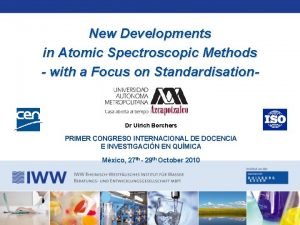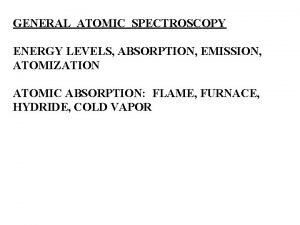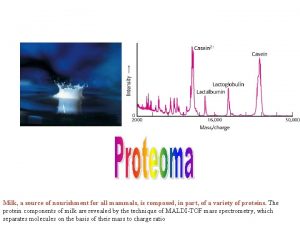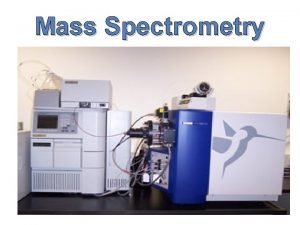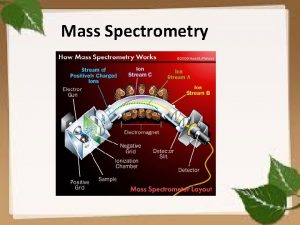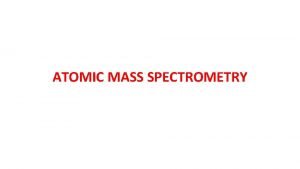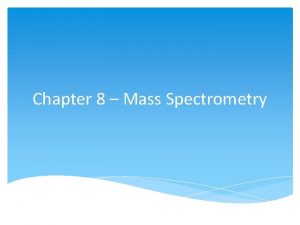MASS SPECTROMETRY Atomic mass spectrometry is a versatile





- Slides: 5

MASS SPECTROMETRY

Atomic mass spectrometry is a versatile and widely used tool for identifying the elements present in samples of matter and for determining their concentrations. Nearly all the elements in the periodic table can be determined by mass spectrometry.

Atomic mass spectrometry offers a number of advantages over the atomic optical spectrometric methods. Advantages: (1) detection limits that are, for many elements, as great as three orders of magnitude better than optical methods (2) remarkably simple spectra that are usually unique and often easily interpretable (3) the ability to measure atomic isotopic ratios. Disadvantages: (1) instrument costs that are two to three times that of optical atomic instruments (2) instrument drift that can be as high as 5% to 10% per hour (3) certain types of interference effects that are discussed later.

Some General Features of Atomic Mass Spectrometry An atomic mass spectrometric analysis 1 contains the following steps: (1) Atomization (2) Conversion of a substantial fraction of the atoms formed in step 1 to a stream of ions (usually singly charged positive ions) (3) Separating the ions formed in step 2 on the basis of their mass-to-charge ratio (m/z), where m is the mass number of the ion and z is the number of fundamental charges that it bears, 2 (4) Counting the number of ions of each type or measuring the ion current produced when the ions formed from the sample strike a suitable transducer.

Because most of the ions formed in step 2 are singly charged 1 z 5112, m/z is usually simply the mass number of the ion. Steps 1 and 2 require the same techniques for atomic optical spectroscopy. Steps 3 and 4 are carried out with a mass spectrometer. * The data from mass spectrometry are usually presented as a plot of relative intensity or ion abundance versus m/z.


